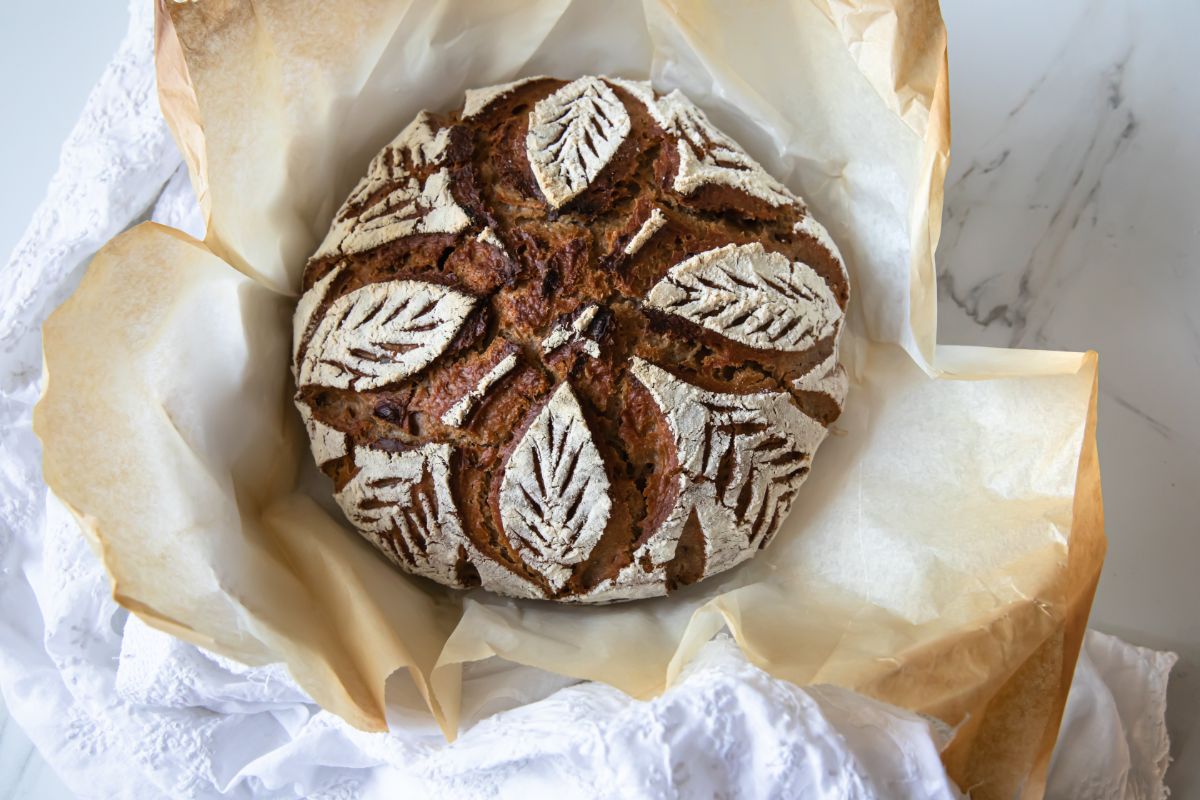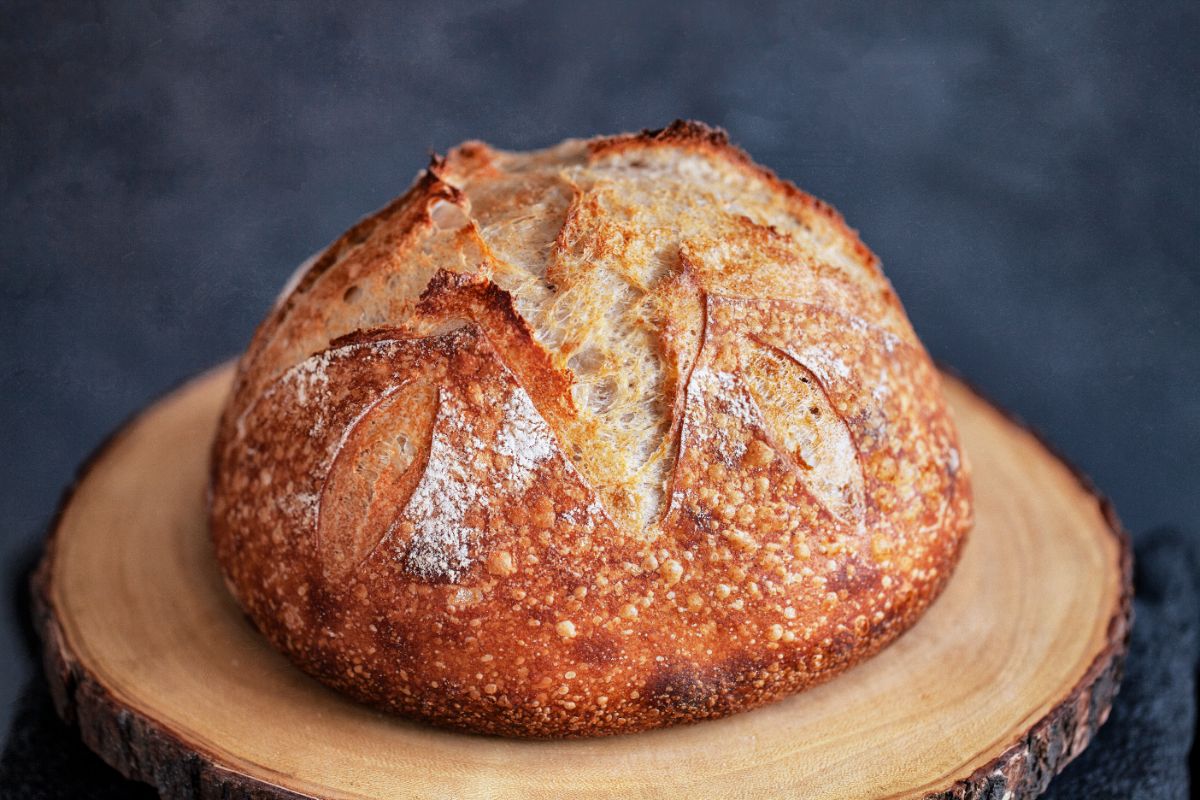You’ve almost certainly seen scored bread. The slices may go down the middle of the loaf or create distinct stripes across the bread at intervals.
So, how deep should you score your bread? You should score your bread with a cut between 6 to 12 millimeters deep or a quarter to half an inch deep. The cuts on long loaves should be shallower than those on round loaves so that you don’t dry out the bread.

However, the ideal depth for the scoring also depends on the dough itself. An over-proofed dough, the scores should be shallow so the bread doesn’t deflate. In under-proofed dough, deeper scoring can help it expand better. That will make up for the relative lack of volume.
The ideal scoring depth also depends on the dough’s condition. For the wet, sticky dough, a cut of a quarter inch is better. For the dry dough, a half-inch cut is better.
Note that warm dough may be a little harder to score than cold, firm dough. However, the temperature of the dough doesn’t affect how deeply you should cut for the type of dough and the desired impact of the cuts. Yet the scoring is affected by the blade you use. It may be better to use the edge of sharp kitchen scissors than a dull scoring blade.
What Is Bread Scoring?
Bread scoring is when you create an incision of some sort on the proofed dough before baking it. This will always have an impact on the appearance of the bread. It may or may not affect the texture of the bread. Most pan baked bread is not scored, while many free-formed home-made or heart bread is scored. In the case of pan baked bread, the pan guides the bread’s growth. The pattern of cuts when you score the bread can cause it to rise up without a pan.
What Are the Benefits of Scoring Bread?
There aren’t many benefits to scoring bread if it is done right. For bakers, it was a way to mark loaves that they made, helping them track sales by baker or sales of specific types of bread.
They could score different types of loaf based on the weight, size, and grain used. Then the seller knows how much to charge for each loaf. Bread scoring is popular today because it was often done by famous restaurants in Paris.
It was a trademark for the upscale eateries, and it was a hallmark of rich families to serve scored bread over mass-produced loaves.
On the flipside, scoring bread incorrectly can cause it to dry out or come out less than perfect. This is why you want to do it right.
Scoring creates weak points in the dough, especially high protein flours. The scored areas expand more. And there is a clear path for carbon dioxide to escape during the oven spring.
This allows you to control how the dough “grows” and can prevent misshapen loaves. For example, take French rye bread.
They’re often scored right after they’ve been shaped before they are even proofed. The goal is to prevent the loaf from bursting at weak spots.
How Do You Score Bread?

Small scale bakers will generally score the bread with a sharp metal blade. This blade was traditionally called a lame.
That is actually the French word for the blade. In the modern kitchen, this could be a kitchen knife, serrated blade or a tool used for just this purpose.
Read more about the best bread scoring lame.
In the factory, it will be done with a water jet. This is often done to score the long loaves of sandwich bread while creating the “ear” or distinctive gap on the top.
They’ll adjust the depth of the scoring by lowering the water pressure or raising the height of the water jet.
If you have a round loaf, the cuts should be equally spaced across the loaf. Hold the knife at a ninety-degree angle to the bread as you cut. These are called transversal cuts, and they are best done with a straight-bladed knife.
Some choose to cut the bread in a criss-cross pattern. That’s more a matter of aesthetics than anything else. It is, for this reason, that very few run racing stripes down the length of their bread.
In long loaves like baguettes, the scoring is parallel to the length of the loaf though it shouldn’t be exactly perpendicular. Score it at a 10 to 30-degree angle, and never cut it entirely across the top of the loaf.
When cutting the long loaf, the knife should be held at a thirty-degree angle. This is also called a lip or ear cut. This is more easily done with a curved blade. Parallel cuts will create a flatter cross-section.
That’s considered ideal when you’re going to make sandwiches from the bread. The scoring stroke should be firm, smooth, fast and consistent as you move down the loaf.
Consider practicing before you cut the loaf because you don’t want to cut too deep. Otherwise, you’ll end up with dried out bread or, worse, an unplanned batch of rolls.
Whether you cut with the blade angled away from your body or toward it is a matter of preference, though cutting away from yourself is often done as a matter of safety. Remember that you can always rotate the dough so you cut at the right angle without the risk of cutting yourself.
What if you’re scoring the bread to create a particular look? Shallow cuts will result in the cut surface of the bread rising much more than a deeper cut.
A very deep cut could collapse under its own weight. This is why shallow cuts are used to get significant rises in the bread, especially if the cuts themselves are small.
This is why shallow cuts are used to create distinctive “ears” on the loaves of bread. You’ll know that the scoring was done right for this purpose when the bloomed crust has variable shading showing that it slowly rose at it baked.
The top edges should be darker but not burned.
